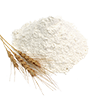Sign In Chef

By using our free meal planner (and the rest of spoonacular.com) you have to agree that you and only you are responsible for anything that happens to you because of something you have read on this site or have bought/cooked/eaten because of this site. After all, the only person who controls what you put in your mouth is you, right?
Spoonacular is a recipe search engine that sources recipes from across the web. We do our best to find recipes suitable for many diets — whether vegetarian, vegan, gluten free, dairy free, etc. — but we cannot guarantee that a recipe's ingredients are safe for your diet. Always read ingredient lists from the original source (follow the link from the "Instructions" field) in case an ingredient has been incorrectly extracted from the original source or has been labeled incorrectly in any way. Moreover, it is important that you always read the labels on every product you buy to see if the product could cause an allergic reaction or if it conflicts with your personal or religious beliefs. If you are still not sure after reading the label, contact the manufacturer.
We also attempt to estimate the cost and calculate the nutritional information for the recipes found on our site. Again, we cannot guarantee the accuracy of this information. Additionally, our nutrition visualizer that suggests that you limit sodium, sugar, etc., and get enough protein, vitamins, and minerals is not intended as medical advice. Similarly, our health tips are based on articles we have read from various sources across the web, and are not based on any medical training. The team behind spoonacular does not possess any medical qualifications and the information may be found to be incorrect or out of date based on future research. If you need help planning your diet or determining which foods (and recipes) are safe for you, contact a registered dietitian, allergist, or another medical professional.
Spoonacular is not responsible for any adverse effects or damages that occur because of your use of the website or any information it provides (e.g. after cooking/consuming a recipe on spoonacular.com or on any of the sites we link to, after reading information from articles or shared via social media, etc.)
×$0.93 per serving

1 likes

Ready in 45 minutes

Spoonacular Score: 27%
Autumn Apple Pie might be just the dessert you are searching for. Watching your figure? This lacto ovo vegetarian recipe has 443 calories, 4g of protein, and 21g of fat per serving. This recipe serves 10. For 93 cents per serving, this recipe covers 8% of your daily requirements of vitamins and minerals. This recipe is liked by 1 foodies and cooks. From preparation to the plate, this recipe takes roughly 45 minutes. It is a cheap recipe for fans of American food. It is brought to you by Foodista. If you have butter, ice water, sugar, and a few other ingredients on hand, you can make it. Taking all factors into account, this recipe earns a spoonacular score of 23%, which is not so excellent. Similar recipes include Autumn In New England Apple Pie, Autumn Apple Butter Pumpkin Pie, and Courtney’s Autumn Apple Crumb Pie.
Apple Pie works really well with Prosecco, Moscato d'Asti, and Late Harvest Riesling. These dessert wines have the right amount of sweetness and light, fruity flavors that won't overpower apple pie. The Cupcake Vineyards Prosecco with a 4.1 out of 5 star rating seems like a good match. It costs about 19 dollars per bottle.
 The Prosecco is light and refreshing with a nose that shows hints of white peach, grapefruit and honey-dew melon. The fine effervescence gives way to creamy flavors of ripe lemons and refined citrus notes with a toasted brioche finish. Medium froth, our Prosecco is reminiscent of lemon meringue pie.
The Prosecco is light and refreshing with a nose that shows hints of white peach, grapefruit and honey-dew melon. The fine effervescence gives way to creamy flavors of ripe lemons and refined citrus notes with a toasted brioche finish. Medium froth, our Prosecco is reminiscent of lemon meringue pie.
» Get this wine on Amazon.com
























































Read the detailed instructions on Foodista.com – The Cooking Encyclopedia Everyone Can Edit